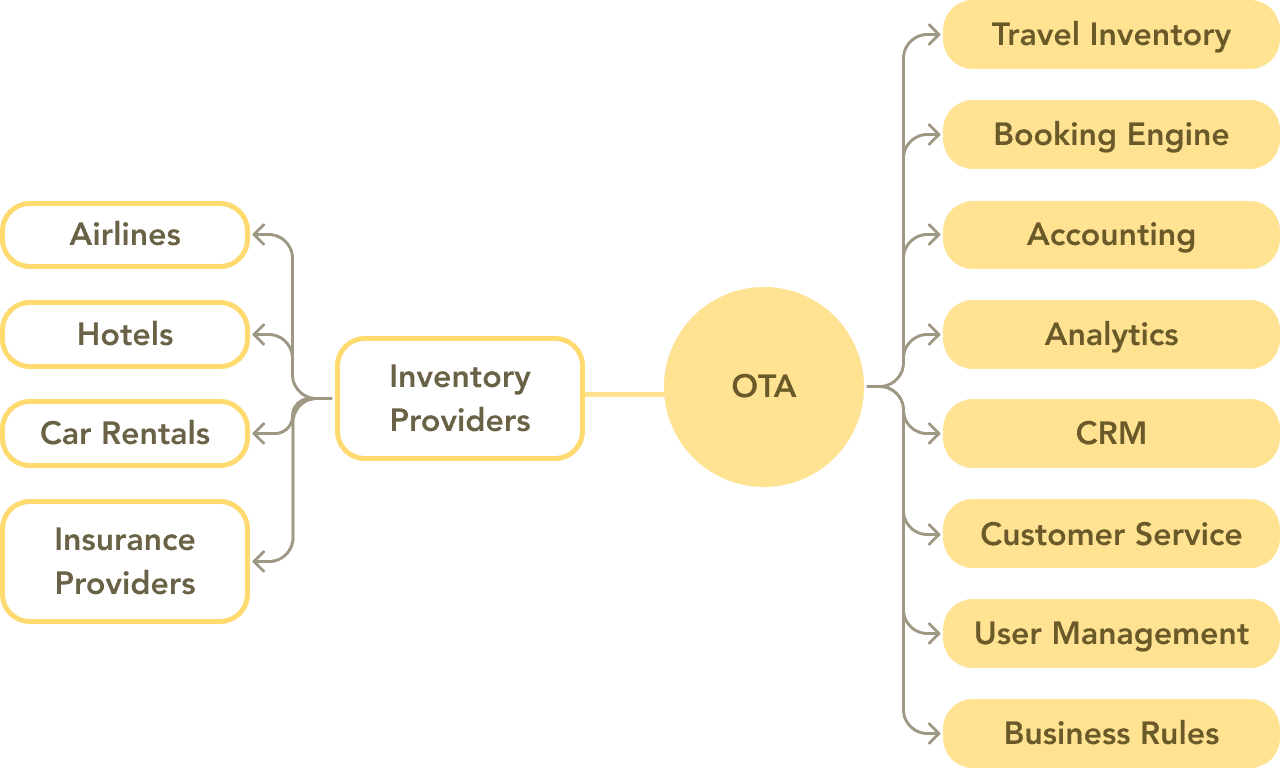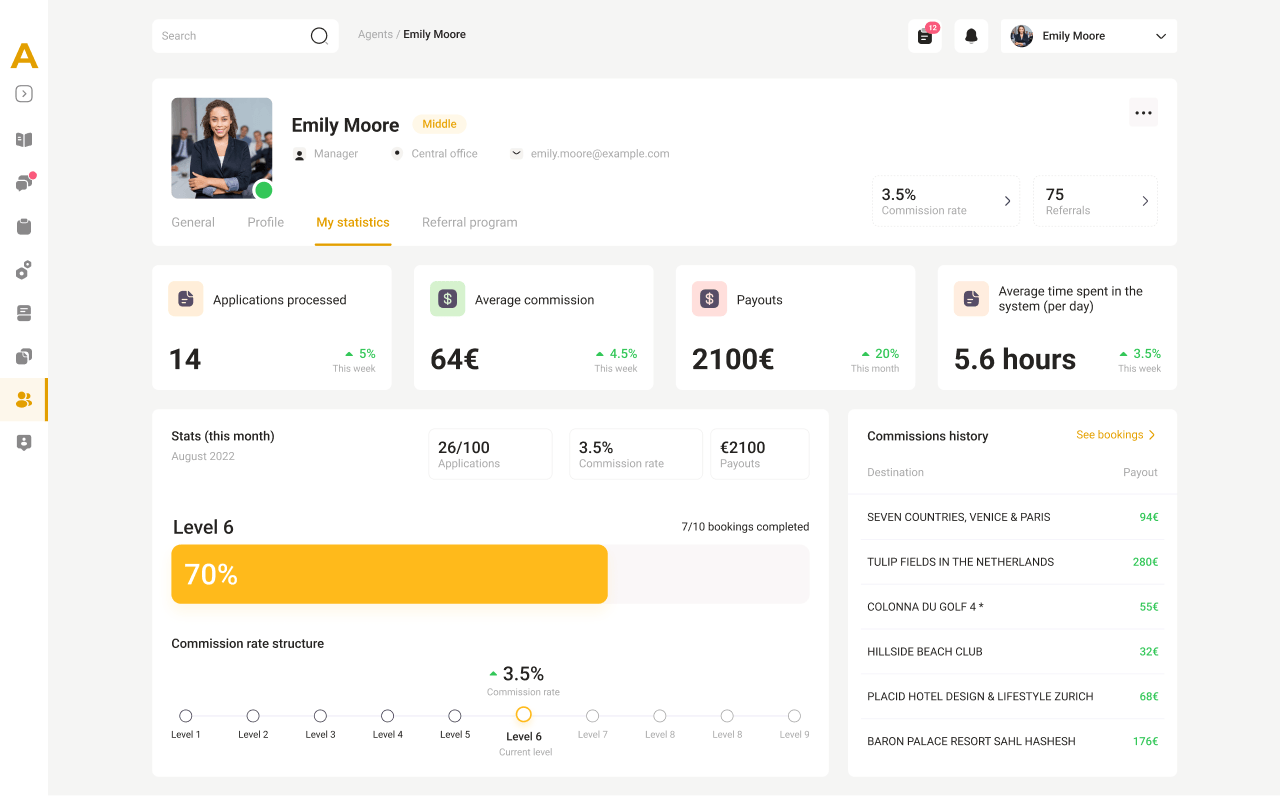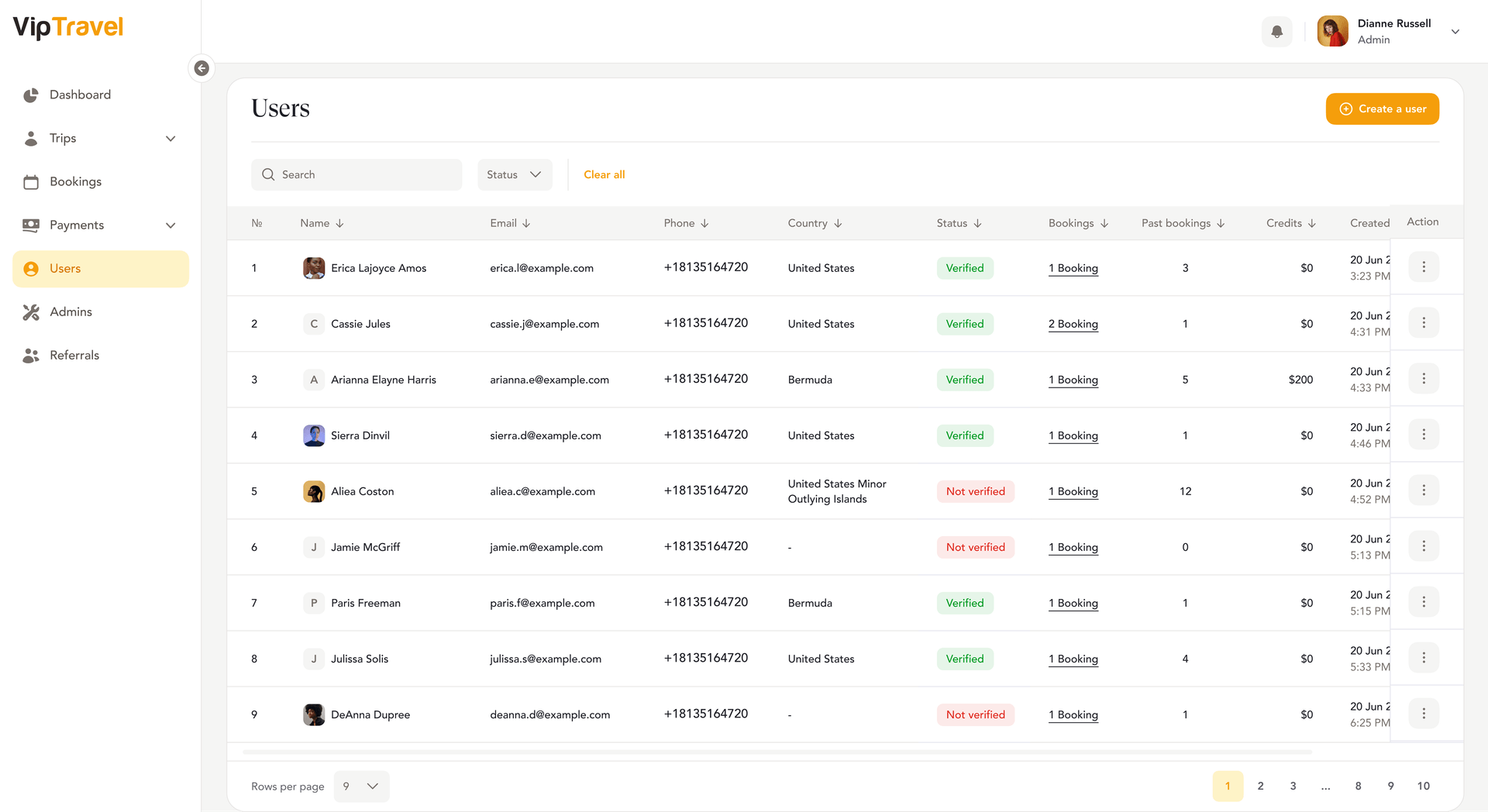How an online travel agency (OTA) back office software works
Alex Ragin
Updated May 14, 2024 • 11 min read

Travel platforms today are intricate systems that manage a wide range of activities, all unseen by the end-user (the traveler). These tasks are largely managed by back office applications. When a customer reserves a flight or hotel on a travel site, they experience a user-friendly interface with attractive visuals and a simple reservation process. But this is just a glimpse of what's actually happening. For the online travel agency (OTA), substantial work occurs behind the scenes, handled by sophisticated systems.
What is a “back office” for an OTA?
Online travel agencies tend to use software in three core areas of their business:
- The front end — where travelers go to book their trips (an app or website).
- The back end — where all the data handling takes place.
- The provider side — the connections to various inventory providers.
In essence, a back office is like the brain of an OTA. It's where all the important information is stored and managed. When you book a trip online, the software steps in to handle a ton of operations behind the scenes. Back office software is the unseen hero that keeps an OTA running smoothly.
When a customer looks for a hotel room and books it, a sequence of actions occur. The booking engine first checks whether the room is available from different providers via an API. The providers return this information, and this is processed by the OTA and then shared with the customer in line with their preferences and the business’ processes. Once the customer confirms and pays, a booking request is sent to the hotel. The hotel then sends back a confirmation, which is relayed to the traveler. The customer's details are typically stored in a CRM system.
Core OTA back office software components
Travel agency back office management software is crucial for automating workflows and enabling OTAs to operate efficiently. Back office software can include various modules and tools, each playing a role in running your business:

Travel inventory
Travel inventory is a collection of travel-related products and services. It may include accommodation, flights, and activities that customers can book through booking platforms or agents. A travel inventory contains details such as pricing, availability, and booking options. Inventories can be managed and updated through:
- A content management system. Tour operator employees manually enter and update data about the products they offer into a self-operated inventory content management system (CMS).
- An API integration. A back office system connects with various third-party APIs, allowing real-time retrieval of information on product availability.
- An extranet. This is a webpage where providers, usually hotels, can manually create and manage their inventory listings. They can check and update availability data, make changes to their inventory, and have control over what information is displayed on the company’s main website.
Booking engine
At the core of most OTA systems is a booking engine that connects with inventory providers, processes bookings, enables online payments, and gathers customer data. While this engine works in the back end, customers interact with the booking engine as a website or app (the front end). But the booking engine can't handle everything, especially aspects like offline bookings, complex reservations, and processes like refunds and cancellations.
This is where the booking desk steps in. It centralizes all bookings, allowing agents to make direct bookings from the back office. This includes creating custom tours, applying discounts, and checking availability manually. Furthermore, it synchronizes data from chats, calls, and online orders in one place for efficient management. The booking desk also gives agents the ability to search, edit, and apply custom prices and combine services to curate pre-packaged tours.
Accounting and finances
This component of OTA tourism back office software primarily focuses on monitoring financial activities, providing a full view of a tour operator’s cash flows. One crucial component is the general ledger, which records and monitors all transactions involving different players in the system, like the tour operator, agents, providers, and partners. It pulls together booking data and financial reports, offering an overview of an OTA’s current financial status.
Finance components also come with payment rules. These can be implemented to set commissions and due dates from various providers. There’s also an invoicing aspect. Every time a financial transaction happens, an invoice is created on the back office side, usually for travelers or providers. This part of the software collects all amounts and statuses of issued invoices — covered, due, overdue, and so on — for a comprehensive snapshot.
Analytics and reports
Analytics functionality is another necessary tool in back office software for tour agencies. Essentially, it provides a snapshot of your company’s health. This includes sales reports detailing gross sales, refunds, and profits, customer reports offering insights into customer demographics and service interactions, and marketing reports derived from a CRM and Google Analytics data to spotlight lead generation and website performance. Key performance indicators like website traffic, revenue, and user activity can be calculated and displayed easily too.
OTA business back office software can utilize modern analytics built in or sourced from specialized vendors like JasperReports, Microsoft PowerBI, or Finereport. These third-party tools often use advanced BI and Big Data techniques to provide highly sophisticated statistical and analytical data.
Customer relationship management (CRM)
In today's world, a smart customer relations strategy is vital, which is why many tour operators now use CRM in their back offices. CRM systems allow OTAs to store customer data and use it for marketing. CRMs identify and segment customers into unique categories, track all client interactions, and automate the sales process by structuring the sales funnel into business-specific phases.
Customer service and support
A customer service tool is another type of important software that manages back office processes. They keep clients in the loop at every step of their booking journey with handy notifications. They also enable live, online chats, so customers can instantly message and interact with an OTA’s support team. They can also incorporate mass mailing tools, so OTAs can keep all their customers updated about marketing information and important news. Some customer service software can even integrate with helpdesk ticket management software like Jira Service Desk, Zendesk, and Intercom to effectively handle customer requests and issues.
User management
A user management tool is a key component in a travel agency back office software system. OTAs have so many different users — including managers, administrators, guides and agents — each with their own unique roles within the company. It's important to assign them appropriate permissions so they can carry out their tasks in the back office system without interfering with others' duties. A user management module allows you to customize permissions for various back office tasks — you can determine who can handle returns and payments, which agents can modify promotional offers, who can see customer information, and so on.
Beyond setting permission rights, this module includes elements like password management for secure authorization. You can set up two-factor authentication, define session durations, and enable password hashing. You can also set up advanced user profiles, so you can then search and filter users based on characteristics like language proficiency or location. With visibility of your users and oversight of their activities, you can conduct productivity analyses and KPI-based performance evaluations.

Business rules
Business rules are essentially the guiding principles that shape how a business operates. While business rules are often hard-coded into applications, in more dynamic back offices and fast-paced OTA management, it can be helpful to use a separate business rule management tool. These allow you to establish and change business rules and guidelines, and also prioritize product preferences. For example, if you have your own inventory, you can set the engine to favor these products over those contracted from third parties. Additionally, you can use it for managing penalties and setting commissions.
Interested in improving your travel agency back office automation software?.
Get in touch today. Zoftify will handle all the hard work.
Best practices for developing tour operator back office software
To develop an effective back office system, keeping the following factors in mind.

Prioritize interface simplicity
When developing a travel agency software that manages back office functions, it is essential to prioritize interface simplicity and intuitiveness. Agency employees and other back office users will appreciate a software that is easy to navigate and not overly complicated. Keeping the design straightforward and user friendly will allow employees to quickly grasp the system's functionalities, speeding up the learning process and enhancing the overall user experience.
Make your software adaptable
The travel industry is constantly changing, with new trends and products popping up all the time — so OTAs need systems that can keep pace and adapt. That’s where open architecture can help.
Open architecture is a way of building software that makes it easy to add or tweak parts as needed. It uses Open APIs, which are like little blocks that can be moved around or added onto. Open architecture also lets users peek into system aspects without much restriction. It gives access to the vital components of the system's structure required for the developer or integrator to do their job. By employing open architecture, travel companies can stay agile, adapting their systems efficiently and ensuring they remain competitive and relevant.

Consider a modular system structure
OTAs and software developers may have different goals. While OTAs often like to switch up their game plan to stay fresh and competitive, software developers like to create products that they can sell to as many travel agencies as possible. The challenge is to balance the specific needs of tour operators with the broad approach of developers.
Enter the solution: modular architecture in back office systems. Modern travel tech providers create modules that tour operators can pick and choose from, rather than following a “one size fits all” system approach. Whether it's inventory for DMCs, API aggregation for outgoing operators, or a corporate policy module for TMCs, there's something for every OTA. Plus, if you do want to switch things up, you can easily add new modules that work for your new business direction.
Create an integrated environment
OTAs are often complex businesses with several departments, each needing specific software for daily operations. For instance, reservation teams need to connect with GDS and travel wholesalers, while sales teams require top-tier customer relationship software for personalized marketing campaigns.
If this sounds familiar, you’ll benefit from integrating with third-party tools like CRMs, inventory providers, accounting software, and payment gateways in real-time. While they may use different technologies, like REST API, XML/XSLT, and JSON, these separate tools will share data with your main back office system software for efficient data flow and centralized information storage. Think of your back office software as a central hub for storing and processing data, while your employees have access to a range of functions offered by specialized integrated solutions.
Make security a must
Security should always be a top priority in any back office system as it's crucial to protect customer data, transactions, and company information. Your back office system should offer role-based access control, so only authorized personnel can access certain information. It should also include data encryption to scramble information and make it unreadable to unauthorized users, plus IP restrictions to control who can access the system, and audit trails to keep a record of system activity. Regular risk assessments are also important to identify and patch any security vulnerabilities.
Lastly, don't forget the human element. Make sure to educate your employees on back office security best practices. This will help to create a security-conscious culture that can prevent breaches from happening in the first place.
Conclusion
The success of your agency relies heavily on the efficiency, security, and adaptability of your back office travel software. This system acts as the backbone of your OTA, seamlessly integrating various aspects from inventory management to customer service. Thanks to the power of technology, back office systems are more advanced than ever, and capable of streamlining operations for dynamic, fast-paced OTAs. In the future, we’ll likely see even more advanced back office software, capable of handling increasingly complex tasks and offering superior service to customers.
Simplify, secure, and speed up your back office operations with Zoftify.
Reach out to us today.
Related articles
Alex loves travel and tech and founded Zoftify to help travel companies use technology more effectively. Before this, he worked in tech consulting, where he led international mobile development teams.
4.84 (24)